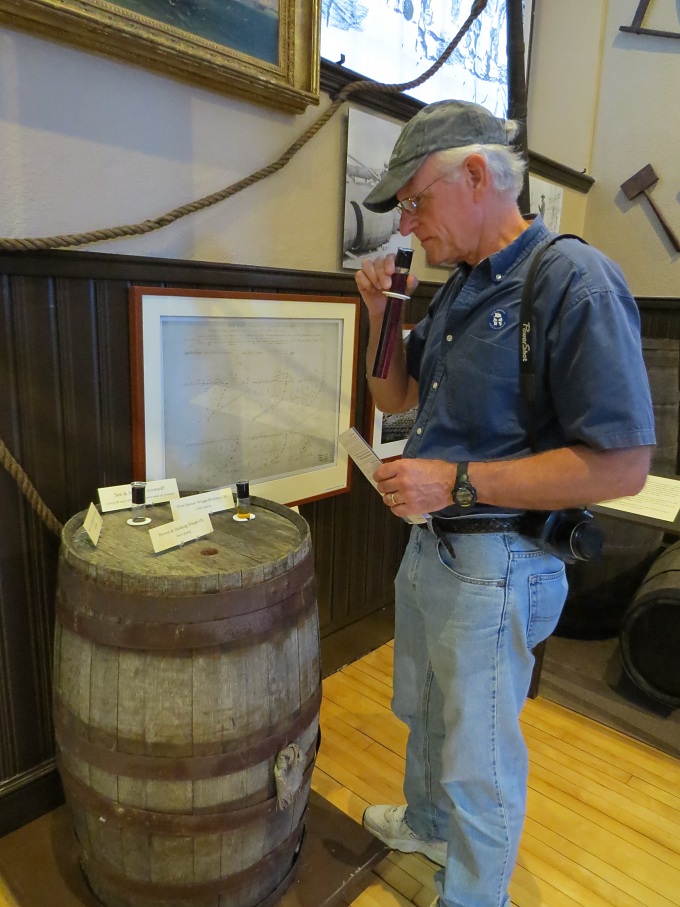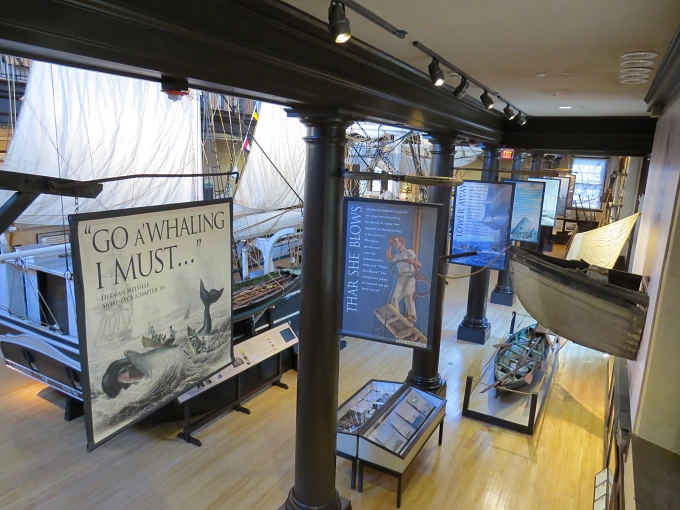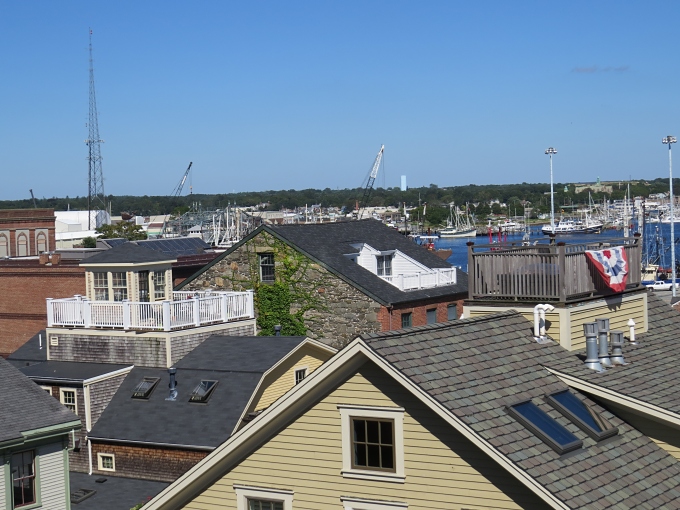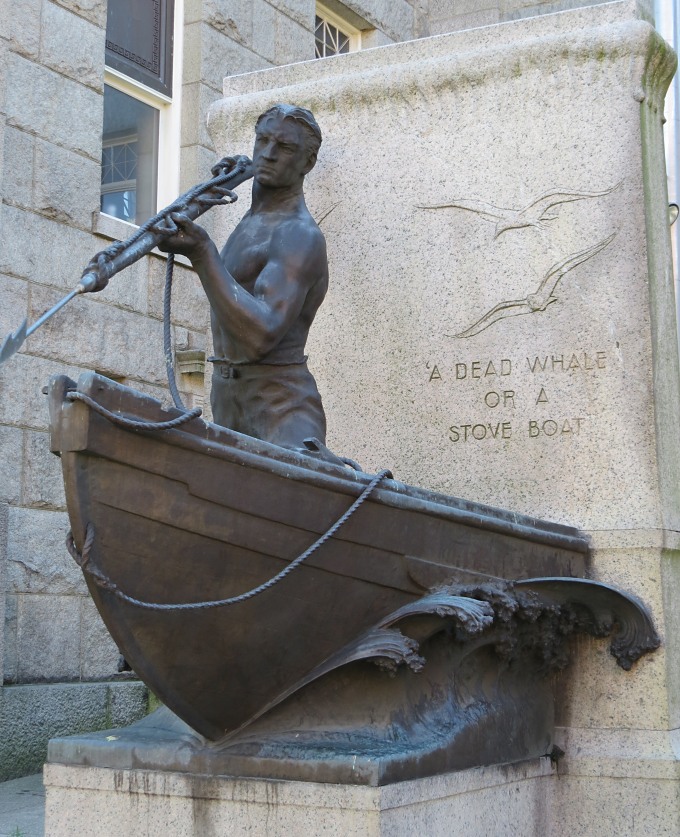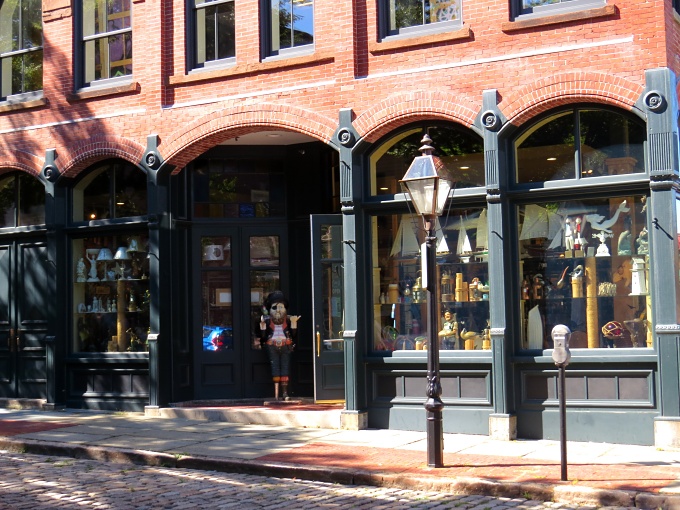All Things Whaling - New Bedford Whaling Museum
/With more than 750,000 pieces to its credit, the New Bedford Whaling Museum owns “the world's most comprehensive collection of art, artifacts and original documents of whaling history”. When visiting New Bedford, this was a not-to-be-missed stop on our itinerary.
The museum building, a whale weather vane mounted on its cupola, towers above most of the other buildings in the area.
We entered a two-story main hall which displayed two full size whale skeletons. Climbing the circular staircase we entered into the world of whaling.
As we moved from room to room and gallery to gallery, we were mesmerized by the scope of the museum's collection and the impact these displays had on us. Whaling, on a limited scale, has been practiced for centuries by native people for subsistence purposes. As usual, once we “civilized” folks got the hang of it, we overdid it and the result was near devastating. The literature on whaling suggests that the “collapse of the industry was due, in part, to declining productivity, occasioned by the disappearance of the whales because of over-hunting (you think?) and the deterioration of the quality of labor.”
Photos showed hundreds of barrels of casked whale oil being unloaded on the New Bedford docks, the results of a whaling season in which 10,000+ whales were killed … wholly for the profits of the oil they would render.
The 89' (27m) half-size scale model of the whaling bark, Lagoda, was outstanding. We climbed aboard and tried to imagine heading to sea in her. We, however, imagined spotting and observing these graceful, gargantuan creatures, not trying to kill them.
Well thought out displays illustrated everything from the uses of whale oil and the “trying out” process for rendering oil from blubber, to harpoons and harpooning techniques used for more effective and efficient kills.
We even sniffed vials of whale oil distinguishing the good from the bad.
An entire gallery was dedicated to scrimshaw and whalebone artifacts from around the world. The detail and craftsmanship of some of these pieces was superb.
Artwork ranged from paintings on canvas to sketches and watercolors by unnamed artists, probably sailors aboard the whale ships who captured on paper what they saw and experienced first hand.
Because of the whaling industry, New Bedford was and is a city of multi-nationalities. A balcony/gallery area one story above and surrounding the Lagoda was dedicated to the city's strong Azorean ties, as well as all the exotic places visited by the whaling ships and the mementos and souvenirs collected. We saw Tongan tapas, Fijian carvings and Polynesian fabric and they brought back warm and wonderful memories.
A surprise and revelation while at the the museum was the fact that David's revered knot guru , Clifford W. Ashley (The Ashley Book of Knots
He was in good company with a display on Joshua Slocum who refitted his boat, Spray, here in New Bedford before leaving for his Sailing Alone Around the World
Herman Melville also set out from New Bedford on his whaling adventure aboard the “Acushnet” in 1841. Quotes from Moby-Dick
We've visited lots of museums in many parts of the world. Some are small and excellent. Some are huge and not as good. No matter … they're always a highlight of our tours and provide lots of information, education and edification. The New Bedford Whaling Museum exceeded all our expectations. This is a world-class museum and left us thinking “WOW!”.






